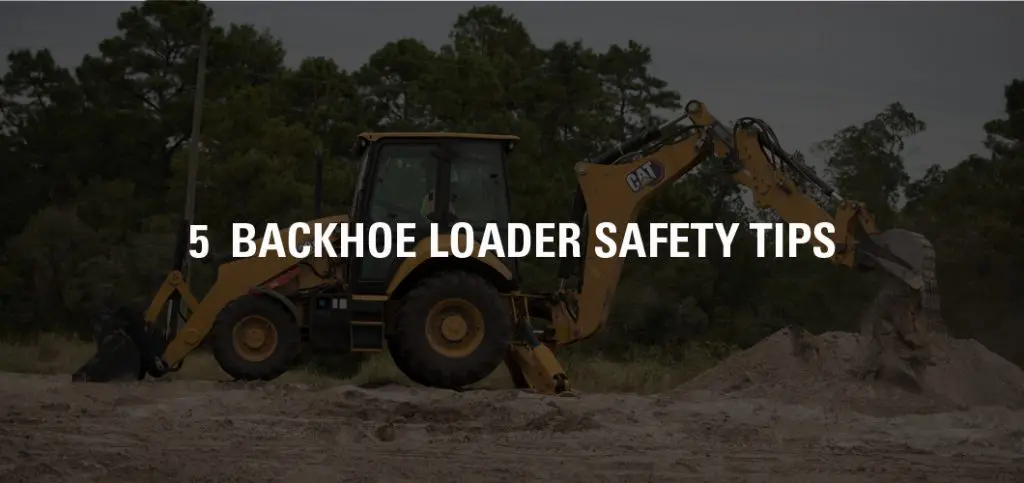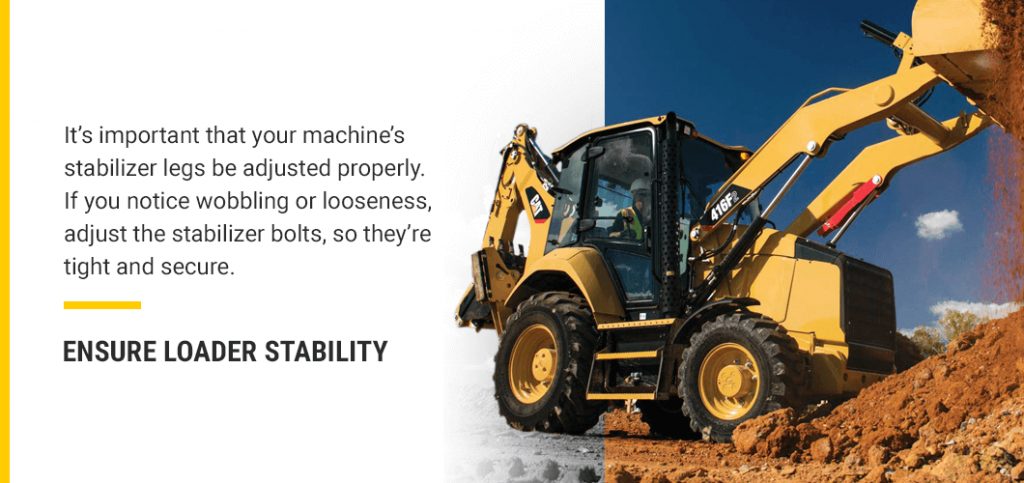
Backhoe Loader Safety Tips
Whether you’re new to operating backhoe loaders or you’re an experienced equipment operator, it’s always important to stay on top of safety tips for backhoe loader operation. Even people who have been operating loaders for years need a refresher from time to time to prevent accidents.
Safety starts by acquiring a comprehensive understanding of how your machine works and what its capabilities are. Ensure you thoroughly read through your Operation and Maintenance Manual before operating your machine and revisit it regularly as you become more experienced. Below are further detailed tips for safely operating a backhoe loader to prevent accidents and keep equipment in proper working condition.
1. Conduct Walk-Around Inspections
It’s critical to get in the habit of conducting pre and post-operation inspections. Before operating your backhoe loader, it’s essential to do a thorough walk-around, ensuring all components are in safe working condition.
The first inspection point happens under the hood. Check fluid levels, including washer fluid, engine oil and transmission and hydraulic fluids. Look for any leaks underneath the machine that can indicate a problem. It’s also a good idea to inspect your engine air filter every so often, either by physically removing it or glancing at the indicator if your particular model has one.
The next step is to do an exterior examination, looking for cracks and any damage to the bucket or work tool attachment. Don’t forget to check your tire pressure and inspect your wheels for damage. Climb into the cab and ensure the controls and lights are functioning properly.
2. Ensure Loader Stability
Cat F Series backhoe loaders come equipped with two stabilizer legs mounted behind the rear wheels. These appendages help to support the machine during operation, preventing the machine’s weight from shifting too much while digging or loading on sloped terrain or close to structures.
It’s important that your machine’s stabilizer legs be adjusted properly. If you notice wobbling or looseness, adjust the stabilizer bolts, so they’re tight and secure. Avoid setting up your loader on uneven or loose terrain, and don’t turn or pivot while the machine is sloped.

Always adhere to the machine’s maximum load capacity as rated by the manufacturer. When moving the backhoe loader, always double-check that the boom is raised, centered and tucked into position to ensure complete counterbalance weight during movement.
3. Be Aware of Surroundings
To stay aware of your surroundings, it’s critical to develop the habit of constantly surveying the landscape and identifying potential hazards. Here are some hazards to pay attention to:
- People: Pinch-points are one of the deadliest hazards when multiple people are working around equipment. If you are operating around others, it’s critical to be aware of fellow personnel nearby and have a system of constant communication, whether that’s through hand signals or a two-way radio.
- Structures: Gain a good idea of your proximity to other structures, whether that’s other equipment, vehicles or buildings. When backing up, always have a spotter or clear view of what’s behind you.
- Overhead objects: Always be certain of what’s overhead when raising the boom of your machine. Be especially concerned with any overhead power lines you might come into contact with or tree branches you might snag.
- Underground: Never dig without being certain of what’s underground. Contact your local utility companies to ensure there aren’t any pipes or wires below you.
4. Wear Personal Protective Equipment
Personal protective equipment (PPE) isn’t optional if you want to ensure you operate a backhoe safely. PPE is designed to be your last line of defense against potential safety hazards that may strike. From being pelted by flying debris to being struck by an object, safety hazards are ever-present. PPE saves lives, so it’s critical to have and wear the right equipment whenever you operate any heavy machinery.
Here are the standard PPE items recommended by OSHA for all construction or industrial workers working around heavy machinery:
- Hardhat: Protects you from falling objects and pinch-points.
- Safety glasses: Protects your vision from airborne particles.
- High-visibility vest or clothing: Protects you from being struck by other equipment and materials.
- Safety or steel-toed shoes: Protects you from slipping, tripping or stubbing your toes, and protects your feet from heavy or sharp objects.
Always ensure you wear your seatbelt when operating your backhoe loader and maintain three points of contact whenever entering and exiting the cab.
5. Stay on Top of Preventive Maintenance
Preventive maintenance is key to extending the life of your investment as well as ensuring total operational safety. Follow the preventive maintenance schedule as prescribed by your manufacturer. Equipment manufacturers recommend standard maintenance intervals. After a set amount of operating hours, certain maintenance items need to be performed.
Basic preventive maintenance items include changing engine oil and air filters, as well as repairing and replacing hoses and belts. It’s also important to properly store equipment between uses to protect your machine from exposure to elements and other wear and tear.

